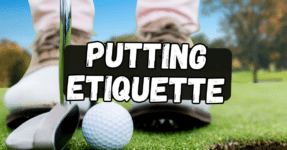Golfers often find themselves chasing the latest equipment in the hopes of gaining an edge on the course. However, there’s a school of thought that suggests older irons might make you a better golfer. This may sound counterintuitive, but let’s dive into why using vintage or older clubs can enhance your performance.
The Challenge of Playing with Older Clubs
Modern irons are engineered for forgiveness. They are designed to compensate for off-center hits, allowing even less experienced golfers to achieve acceptable results. While this technology is beneficial, it can also mask errors in your swing. Older irons, on the other hand, require more precision. By using them, golfers are compelled to refine their technique, focusing on hitting the sweet spot consistently. This heightened attention can lead to improved overall skill.
I’m not talking about releases from the past few years, either. TaylorMade’s M6 irons from 2019 earned top marks when we tested them as game-improvement clubs. I’m talking about the clubs your dad played with twenty or thirty or forty years ago.
Muscle Memory
With older irons, golfers rely more on muscle memory and accurate feedback from each swing. These clubs provide immediate insights into imperfections. This feedback loop is crucial for honing one’s technique. It promotes muscle memory and develops a repeatable and reliable swing. Over time, this leads to a more consistent performance with any set of irons.
Control
Older irons tend to have less technology built in to assist with trajectory and spin. As a result, players must learn to manage these aspects themselves. This encourages a deeper understanding of how swing speed, angle, and impact affect ball flight. Mastering these elements with older irons can increase a player’s control over the ball, allowing for a more strategic gameplay that can be advantageous in various on-course situations.
Sure, older irons are less forgiving than modern clubs. That’s the point.
Main Takeaway
I discuss this often on YouTube, respecting the history of the game. And there’s something inherently nostalgic and rewarding about playing with older equipment. It connects golfers with the history and evolution of the game, fostering a deeper appreciation for the sport and its traditions. This awareness can enhance the enjoyment and satisfaction derived from each round, making the game more than just a competition but a truly personal journey.
The allure of the latest golf technology is undeniable, but there’s a strong case to be made for embracing older irons. By fostering precision, enhancing muscle memory, improving control, and connecting more deeply with the game’s history, golfers can find themselves not just playing better but enjoying the game on a deeper level. Next time you’re tempted to upgrade your clubs, consider spending some time with an older set and discover the benefits they might bring to your game.
Related Reading:
Clint is PGA-certified and was a Head Teaching Professional at one of Toronto's busiest golf academies. He was also featured on Canada's National Golf TV program, "Score Golf Canada," twice. He graduated with a degree in Golf Management from the College of the Desert in California and studied under Callaway's co-founder, Tony Manzoni. He has a handicap index of 6.2 and spends the winters near Oaxaca, Mexico, where he plays twice a month at the Club de Golf Vista Hermosa. He's written over 100 articles at GolfSpan since 2021. You can connect with Clint at LinkedIn, FB, his website, or Clintcpga@gmail.com.







